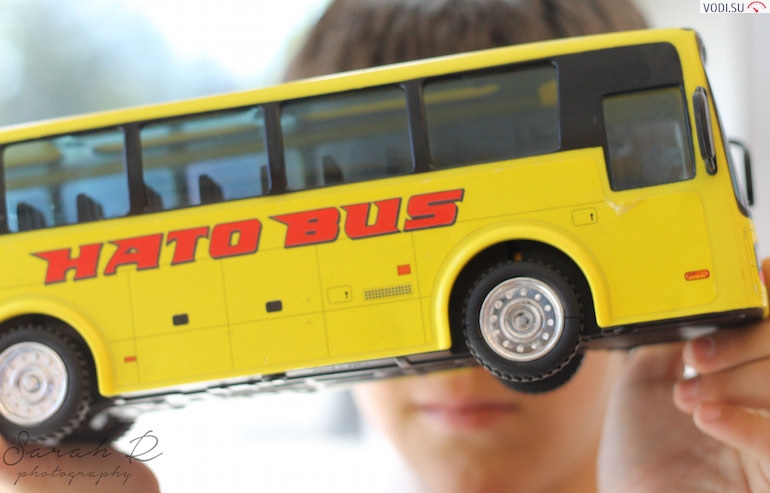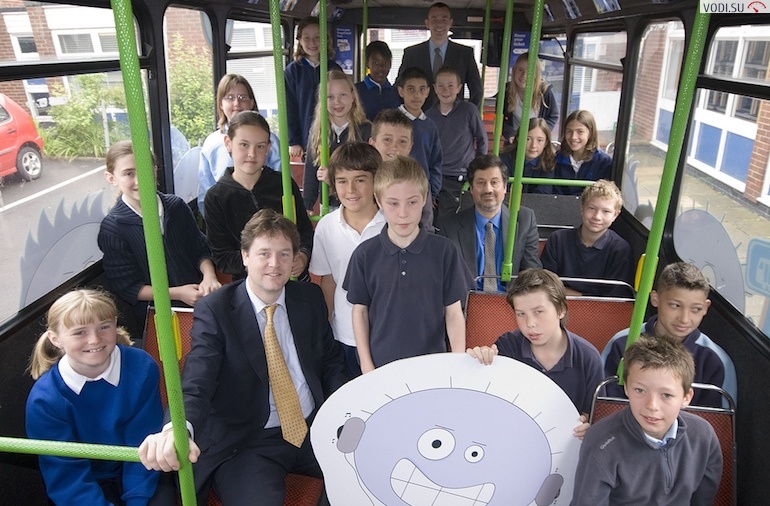Rules for transporting children in buses on the territory of the Russian Federation
In 2013 and 2015, the rules for transporting children in buses across the territory of our country were significantly tightened.
These changes affected the following items:
- technical condition, equipment and age of the vehicle;
- duration of the trip;
- accompaniment - mandatory presence in the group of a physician;
- requirements for the driver and accompanying personnel.
The rules for observing speed limits in the city, highway and highway remained unchanged. They are also very strict about the presence of a first-aid kit, fire extinguishers and special plates.
Recall that all these innovations relate to the transportation of organized groups of children, numbering 8 or more people. If you are the owner of a minivan and want to take the children with their friends somewhere to the river or to the Luna Park for the weekend, then you only need to prepare special restraints - child seats, which we have already talked about on Vodi.su.
Let's consider the above points in more detail.

Bus for transporting children
The main rule, which came into force in July 2015, is that the bus must be in perfect condition, and no more than ten years have passed since the date of its release. That is, now you can’t take children to the camp or on city tours on an old bus like LAZ or Ikarus, which were produced back in the Soviet years.
Moreover, before each flight, the vehicle must undergo a technical inspection. Personnel must ensure that all systems are in good working order. This is especially true for the brake system. This innovation is due to the fact that in recent years the number of accidents in which children have suffered has increased.
Special attention is paid to equipment.
Let's list the main points:
- without fail, in front and behind there must be a sign "Children", duplicated by the corresponding inscription;
- to monitor the driver's compliance with the work and rest regime, a Russian-style tachograph with a CIPF block is installed (this module additionally stores information about engine hours, downtime, speed of movement, and also has a GLONASS / GPS block, thanks to which you can track the route in real time and location of the bus)
- speed limit signs are installed in the rear.
In addition, a fire extinguisher is required. According to the rules for admission, passenger buses are provided with 1 powder-type or carbon dioxide fire extinguisher with a fire extinguishing agent charge of at least 3 kg.
There should also be two standard first aid kits, which include:
- dressings - several sets of sterile bandages of different sizes;
- tourniquet to stop the bleeding;
- adhesive plaster, including rolled, sterile and non-sterile cotton wool;
- isothermal rescue blanket;
- dressing bags, hypothermic (cooling) bags;
- scissors, bandages, medical gloves.
All content must be usable, that is, not expired.
Please note that if the intercity trip lasts more than 3 hours, the escort group must include adults, and among them a qualified physician.

Driver requirements
To completely eliminate the possibility of an accident, the driver must meet the following characteristics:
- the presence of the rights of category "D";
- continuous driving experience in this category for at least one year;
- undergoes a medical examination once a year to obtain a medical certificate;
- before each flight and after it - pre-trip medical examinations, which is indicated in the accompanying documentation.
In addition, the driver for the previous year should not have any fines and traffic violations. He is obliged to adhere to the modes of work and sleep approved for freight and passenger traffic.
Time and duration of the trip
There are special rules regarding the time of day when the trip is made, and the duration of the stay of children on the road.
First, children under the age of seven cannot be sent on a trip if the duration is more than four hours. Secondly, restrictions are introduced on driving at night (from 23.00 to 6.00), it is allowed only in exceptional cases:
- if there was a forced stop along the way;
- if the group is moving towards railway stations or airports.
Regardless of the age group of small passengers, they must be accompanied by a health worker if the route runs outside the city and its duration exceeds 4 hours. This requirement also applies to organized columns consisting of several buses.
Also, the vehicle must be accompanied by adults who monitor the order. While moving along the route, they take places near the entrance doors.

And the last thing - if the trip is longer than three hours, you need to provide children with food and drinking water, and the set of products is officially approved by Rospotrebnadzor. If the trip lasts more than 12 hours, adequate meals should be provided in the canteens.
Speed modes
Permissible speed limits have long been in effect on the territory of the Russian Federation for vehicles of various categories. We will give those that relate directly to passenger transport, with a capacity of more than nine seats, intended for the transport of children.
So, according to the SDA, clauses 10.2 and 10.3, buses for organized transportation of children move along all types of roads - city streets, roads outside settlements, highways - at a speed of no more than 60 km / h.
Required documents
There is a whole scheme for obtaining permission to transport children. First, the organizer submits requests of the established form to the traffic police - an application for escort and a contract for chartering motor vehicles for the carriage of passengers.
When permission is received, the following documents are issued:
- the layout of the children on the bus - it is specifically indicated by surname in which place each child sits;
- list of passengers - their full name and age;
- list of persons accompanying the group - indicate their names, as well as phone numbers;
- driver information;
- the route of movement - the points of departure and arrival, places of stops, time schedule are displayed.
And of course, the driver must have all the documents: a driver's license, OSAGO insurance, STS, PTS, a diagnostic card, a technical inspection certificate.
Separately, the requirements for medical staff are indicated - they must have a certificate to confirm their qualifications. Also, the health worker records all cases of assistance in a special journal.
As you can see, the state takes care of the safety of children on the roads and tightens the rules for passenger transportation.
Loading…